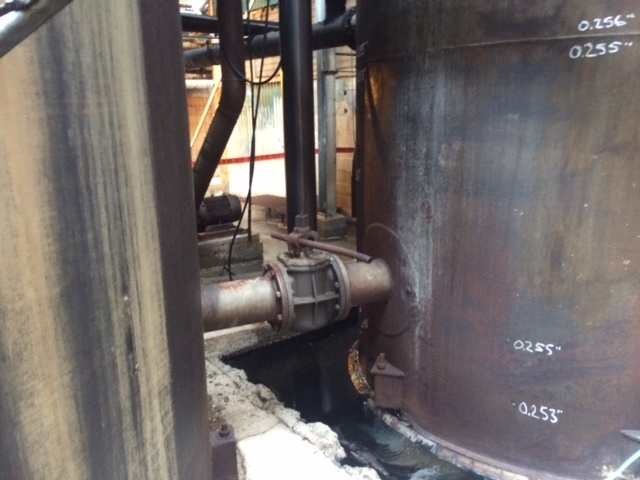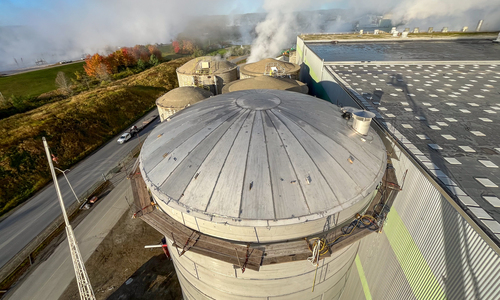A Step-by-Step Check Out the Installment Refine of Welding Examination Techniques
Welding examination is a critical process that assures architectural stability and safety. The installment of inspection techniques entails numerous organized steps, each important to achieving dependable results. From planning and tool option to performing visual and non-destructive examinations, each phase needs mindful focus. Understanding these treatments can greatly boost quality control in welding projects. What difficulties arise in carrying out these strategies, and exactly how can they be successfully resolved?
Comprehending the Importance of Welding Evaluation
Welding inspection is a vital part of guaranteeing structural stability and security in building and production procedures. This method includes examining bonded joints for defects, guaranteeing that they satisfy certain standards and policies. By methodically assessing weld high quality, assessors can recognize issues such as cracks, gaps, and incomplete combination, which can endanger the toughness and resilience of structures.
The relevance of welding examination expands beyond immediate safety problems; it aids protect against expensive failures and possible threats in the long-term. Reliable examination methods foster compliance with industry standards, thus improving the overall dependability of bonded components. In enhancement, a robust inspection process contributes to keeping the online reputation of producers and builders, as it assures clients of the high quality of their jobs. Inevitably, recognizing the relevance of welding assessment is vital for promoting safe building methods and guaranteeing the longevity of crucial framework and items.
Picking the Right Equipment for Examination
When choosing the appropriate devices for assessment, it is necessary to contemplate the certain demands of the welding process and the materials entailed. Various evaluation approaches, such as aesthetic, ultrasonic, and radiographic testing, necessitate distinct devices customized to their one-of-a-kind demands. For visual inspections, tools like multiplying calipers and glasses are crucial for examining weld top quality. Ultrasonic testing needs customized equipment efficient in sending and getting audio waves to detect interior imperfections. Radiographic testing, on the other hand, makes use of X-ray or gamma-ray sources along with sensitive film or digital detectors to disclose variances.
Additionally, individual safety devices (PPE) is important to ensure the safety and security of assessors throughout assessments. Choosing the right devices not only improves the precision of examinations however additionally adds to the general honesty and safety and security of the welding task. A detailed understanding of offered devices and their applications is crucial for effective welding assessment.
Getting ready for the Evaluation Refine
Before initiating the examination process, it is necessary to develop a detailed strategy that lays out the scope and objectives of the examination. This strategy must include certain requirements that specify what makes up appropriate top quality in the welding work being checked. Identifying the pertinent codes and standards is important, as they will certainly assist the inspection standards and methodologies.
Additionally, workers involved in the examination has to be sufficiently educated and certified in welding examination techniques to guarantee reliability and accuracy. A checklist can be helpful in arranging the numerous aspects of the assessment, ranging from devices preparedness to environmental problems that could affect the evaluation.

Finally, logistical factors to consider such as organizing, offered resources, and interaction in between staff member need to be addressed. By preparing systematically, examiners can enhance the effectiveness of the evaluation and make certain that all important factors are properly thought about prior to continuing with the evaluation itself.
Conducting Aesthetic Examinations

Conducting aesthetic evaluations is an essential action in the welding evaluation process, calling for mindful prep work to assure efficient analysis. Inspectors have to recognize with vital defect signs that can signify prospective concerns in weld quality. By focusing on these elements, one can enhance the overall integrity of the inspection results.
Getting Ready For Visual Examination
Visual evaluation serves as a vital very first step in the welding inspection procedure, guaranteeing that any type of prospective problems are identified early important link (API 650 Welding Inspection). Correct preparation is essential for effective visual assessment. Inspectors need to start by reviewing appropriate documents, including welding treatments and specifications, to recognize the job requirements. They have to collect needed devices, such as magnifying glasses, flashlights, and proper individual safety devices (PPE) A detailed assessment of the examination area is crucial; assessors must verify it is totally free and clean of blockages. Additionally, it is essential to develop perfect lights conditions to enhance presence of welds. By taking these preparatory steps, examiners can develop an environment for recognizing discrepancies and guaranteeing the stability of the bonded frameworks
Trick Issue Indicators
A detailed understanding of vital problem signs is important throughout visual evaluations to assure the top quality and safety and security of welded joints. Examiners ought to concentrate on specific signs such as splits, porosity, undercuts, and insufficient blend. Splits might show up as sharp lines and can compromise structural stability. Porosity manifests as tiny openings that can compromise weld stamina. Undercuts, which are grooves along the weld edge, can bring about stress concentration. Insufficient combination suggests that the weld metal did not appropriately bond with the base material, causing a weak joint. By systematically identifying these problems, assessors can identify conformity with market criteria and enhance the general integrity of bonded structures, eventually adding to safer functional problems.
Applying Non-Destructive Evaluating Strategies

Countless read more non-destructive testing (NDT) methods are integral to ensuring the honesty of bonded frameworks without jeopardizing their capability. These approaches enable inspectors to examine weld quality and discover defects without causing damages to the materials being checked. Usual NDT methods include ultrasonic testing, radiographic testing, magnetic bit testing, and color penetrant testing. Each method offers a details objective, addressing different types of defects such as cracks, porosity, or insufficient fusion.
Executing NDT strategies needs a methodical approach, beginning with selecting the appropriate method based upon the materials and the nature of the weld. Educating employees in these strategies is important for accurate results. In addition, establishing clear procedures and standards warranties uniformity throughout the evaluation procedure. By incorporating NDT into the welding examination workflow, organizations can boost the integrity of their products while decreasing potential threats related to structural failures. This positive strategy eventually adds to keeping security and quality criteria in welded building and constructions.
Analyzing and recording Assessment Outcomes
Efficient visit homepage documents and analysis of assessment outcomes are crucial parts of the welding evaluation procedure. Accurate documents of evaluation searchings for function as a referral for quality control and conformity with industry criteria. API 650 Welding Inspection. Examiners ought to utilize structured kinds or electronic platforms to log details such as the kind of weld, inspection methods employed, and any type of discrepancies determined throughout the assessment
As soon as information is collected, comprehensive analysis is essential. This involves contrasting results against established criteria to identify patterns or repeating problems. Statistical devices might be employed to evaluate defects and evaluate their effect on general weld top quality.
In addition, effective communication of searchings for to relevant stakeholders is vital. Summaries and reports need to be succinct and clear, highlighting essential insights and recommendations for corrective activities. By methodically documenting and analyzing assessment outcomes, companies can cultivate continual enhancement in welding techniques and boost item stability.
Frequently Asked Questions
What Qualifications Are Required to End Up Being a Welding Examiner?
To become a welding assessor, one normally needs appropriate qualifications such as AWS CWI, together with experience in welding techniques, understanding of welding codes, and proficiency in inspection strategies to ensure high quality and safety requirements.
Exactly How Commonly Should Welding Inspections Be Conducted?
Welding assessments should be conducted routinely, typically after each weld is finished, and occasionally during tasks. Factors such as job complexity, market criteria, and governing demands can influence the regularity of these examinations.
What Is the Expense of Welding Inspection Providers?
The price of welding assessment services varies considerably based upon aspects such as task size, complexity, and area. Typically, prices range from $100 to $150 per hour, with additional charges for specialized testing and qualifications.
Are There Certifications for Welding Inspectors?
Yes, there are different certifications for welding inspectors, consisting of those used by the American Welding Culture (AWS) and the International Institute of Welding (IIW) These accreditations guarantee examiners possess the required skills and understanding for effective examinations.

Exactly how Do I Pick an Evaluation Provider?
To pick an evaluation provider, one ought to assess credentials, experience, market track record, and consumer evaluations. Furthermore, comparing service offerings and rates can assist ensure the picked copyright meets certain job requires successfully.
Furthermore, employees entailed in the examination should be adequately trained and accredited in welding assessment techniques to assure reliability and precision. Carrying out visual inspections is a necessary action in the welding examination procedure, calling for cautious preparation to guarantee efficient analysis. Aesthetic evaluation serves as an essential first action in the welding inspection procedure, ensuring that any possible issues are recognized early. Effective documents and analysis of assessment results are necessary parts of the welding evaluation process. Welding evaluations must be carried out frequently, normally after each weld is finished, and periodically during jobs.